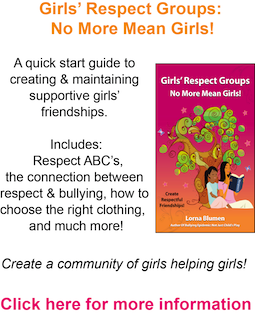Lightbulbs flash and questions swirl around Oscar Pistorius – the South African Olympian charged with murdering his girlfriend Reeva Steenkamp. He is set to stand trial in March. Reeva may be another shocking statistic. UN Women, a branch of the United Nations, states that more than 60% of female murder victims in South Africa are killed by their partners.
But the story is bigger than South Africa. Much bigger. In fact, wherever in the world you’re reading this, it touches you. That’s why Girls’ Respect Groups thinks girls and women everywhere – and the boys and men who love them – should be part of the conversation and the solution.
This summer, the World Health Organization released the first-ever worldwide study on the prevalence of violence against women. WHO undertook the study in partnership with researchers at the London School of Hygiene and Tropical Medicine and the South African Medical Research Council.
What they found:
- 35% of women (of all ages) everywhere experience violence, either at the hands of intimate partners or non-partners
- 38% of the world’s murdered women are murdered by their partners
- 42% of injured women are injured as a result of physical or sexual violence at the hands of their partners
- If you’re a woman or girl in Africa, the chance you’ll suffer partner or non-partner sexual violence is almost 50%
- In southeast Asia, the chance you’ll suffer sexual violence is 40%
The researchers say these results are probably underestimates.
This is not just a problem in third world countries. The Globe and Mail reported that almost 20% of women in North America and Western Europe suffer domestic violence. The rates are even higher in aboriginal communities. Think about it: 1 out of 5 women in so-called “first world” countries are subject to barbaric physical cruelty (bullying and more) from their intimate partners. That’s disgraceful.
The violence ranges from traumatic to fatal. The WHO report cites the mental and physical health implications:
- STDs and HIV Diseases. Women who have been sexually abused have a 150% greater chance of getting STDs. In some regions (like sub-Saharan Africa) they have the same higher likelihood of getting HIV
- Mental Health And Substance Abuse Issues. Women who suffer domestic violence are more than twice as likely to abuse alcohol and suffer from depression
While the statistics are deeply disturbing, they are also a call to action. The WHO report recommends that health care workers can help:
- Health Care Workers Can Take A Lead Role In Addressing Abuse. They are often the first to see the effects of violence, and need more training in broaching the topic of abuse so women can get the help they need
- Health Care Facilities Around The World Need To Create Safe And Confidential Settings For Women To Report Abuse, linked to a referral system so women can get mental and physical support
This problem requires more than just a health care solution. The only solution is to prevent the abuse from happening in the first place.
Children must change. To do that, we must reach waaay back to the way we raise our children, instilling in them our bedrock belief and demonstrated commitment to respect for oneself and for others.
Children who have respect for themselves won’t bully others, don’t seek bullies as friends, and won’t stand by while others are bullied. Girls and women with respect for themselves take an early exit from relationships pointing towards violence. Boys and men with respect for themselves don’t need to bully others to maintain their emotional state or demonstrate their social power. And when they have a bad day, they have the emotional self-control to resist unloading on the nearest weaker person.
Obviously, there is a huge economic component to this problem, but women with respect for themselves are more likely to get what they need to become self-supporting. However, stories like Chris Brown’s domestic abuse of Rihanna demonstrate that money, by itself, doesn’t solve this problem.
Worldwide, we must work to change our long-standing cultural beliefs and end practices that demean women. In the same way we have been shifting our culture away from spanking children and drunk driving, we must push for that “tipping point” where the vast majority of adults unite in thought and action to make domestic abuse unthinkable.
We want young women and young men to step with boldness into the center of their own lives, with respect for self and others; to protect themselves, their friends, their mothers and sisters, and to stand together to end violence against women.
Learn more:
Global and regional estimates of violence against women: Prevalence and health effects of intimate partner violence and non-partner violence, World Health Organization, WHO Reference No. 978 92 4 156462 5, June 2013
“Fast Facts: Statistics on Violence Against Women and Girls,” UN Women (United Nations Entity for Gender Equality and the Empowerment of Women), EndViolenceNow.Org
E Anderssen, “30% Of Women Are Assaulted By Their Partners, WHO Study Finds,” The Globe and Mail, June 20, 2013
L Blumen, Bullying Epidemic: Not Just Child’s Play, Camberley Press, 2011
C Chelala, “Domestic Violence Is A Global Public Health Concern,” Boston Globe, July 15, 2013


